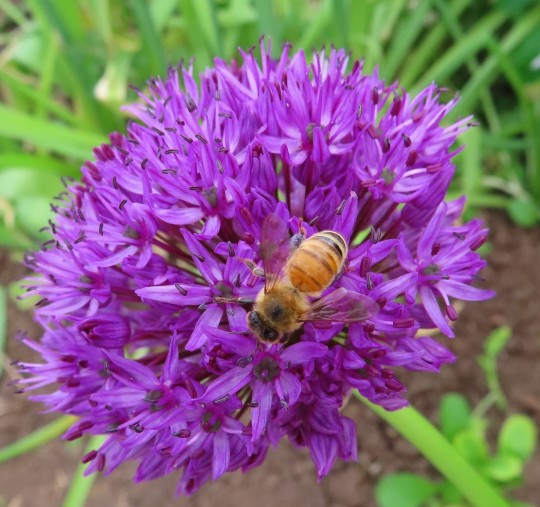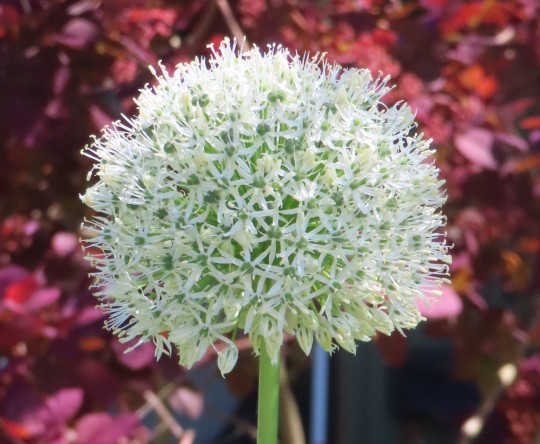#Cooking (Tips)
Text
actually yknow what, no. this is not being limited to discord, yall get it too.
some general cooking tips (in which there is a brief senshi posession):
moisture is the enemy of crispy skin. pat dry with paper towel, and if you have the time and spoons, give a thorough but even coat of baking powder and let sit uncovered in your fridge overnight. this will dry out the skin nicely. for pork belly, create a tight foil boat so that only the skin is showing, and cover in salt to draw out moisture, repeating a couple times if necessary.
furikake seasoning, for the fellow rice lovers, is just nori (seaweed), sesame seeds, sugar, and msg/salt. you might have most if not all of these things already in your kitchen.
chai spice mix is just cinnamon, ginger, cardamom, cloves, nutmeg, & allspice.
pumpkin spice is just cinnamon, nutmeg, cloves, and ginger.
to cure your own bacon, you only need water, white and brown sugar, and a non-iodized salt - himalayan pink salt is not iodized, if you cannot find butchers curing pink salt. from there, you can add any seasoning/flavoring you want.
the truly adventurous may cook their rice in green tea for a fresh clean taste.
you can tell if a fish is truly fresh by their eyes - clear and bright is fresh, while cloudy is older or potentially has been frozen.
it's cheaper to buy a large block pack of ramen from your local asian market and repackage the bricks into sandwich bags, than to buy a box of individually packaged ones such as maruchan or top ramen.
when buying meat, look at it's fat content - more fat marbling usually means more tender + flavorful.
you can save onion skins and other vegetable scraps to make your own broth with. you can also save bones for this. mix and match ratios to create your ideal flavor.
bay leaf will always make a soup or broth taste better, but Watch Out (they are not fun to bite into on accident).
msg is, in fact, not The Devil, that was just a racist hate campaign against the chinese and other oriental races. it's literally just a type of salt. it is no more dangerous to eat than any other type of salt.
washing your rice is important because it not only improves flavor and texture by removing excess starch, but it also helps reduce any residual pesticides or dirt, or even insect fragments (please remember that rice paddies are essentially giant ponds that all kind of things live in and swim around. you should also be washing all your produce in general.)
please salt your cooking water for pastas, it just tastes better and you will be happier for it.
boiled potatoes are also improved by salt water.
if you hate vegetables, please consider trying them fried in butter or perhaps bacon grease. it is healthier to eat them fatty than not at all.
healthy food does not in fact have to taste miserable. thats a lie. they are lying to you. free yourself from your blandness shackles. enter a world of flavor.
9K notes
·
View notes
Note
On a day you have slightly more energy than usual, get a whole bag of yellow onions, slice them into thin slices, and throw them into a slow cooker on low with half a stick (or more, butter is good for you) of butter for 8-12 hours. When they are nice and caramelized, spread them in a thin layer on a cookie sheet to freeze, but kind of score the layer in a grid pattern so you can break them into squares once frozen. That will give you enough caramelized onions for literal months, just throw a square or two into any soup, hash, sauce, whatever and it will taste like it took hours with no extra effort at that time.
🧅
729 notes
·
View notes
Text
Learning to Cook Like a Witch: Using the Scraps
Cooking can create a lot of waste. From peels and rinds to bones and leaves, people throw away quite a lot of scraps in the kitchen. And witches, as you may know, are experts in the art of the cunning use of whatever we’ve got around.
As a witch who spends a lot of time in the kitchen, I’ve had ample opportunities to get creative in my cooking craft. It helps that I grew up in a household defined by scarcity: not our own, by the time I was conscious enough to remember, but my parents’ poverty. It colored the way I learned to cook, using everything I possibly could, making enough to last, preserving what I didn’t immediately use, and creatively reusing leftovers and scraps.
There are some topics I won’t necessarily cover here. Composting is an option, but there are some bits of food scrap that don’t need to be composted — they can be saved and repurposed for all sorts of things, magic and mundane. Likewise, recycling, buying sustainably, and growing your own food when you can are all great options for reducing household waste in the kitchen.
For the purposes of this post, I want to focus specifically on food scraps. This is an organized list of kitchen scraps that I’ve used in a variety of other dishes and projects. I’m focusing primarily on food waste, not so much on packaging (such as reusing egg cartons, milk containers, boxes, and so forth).
Vegetable Scraps
Freeze leftover vegetable scraps to make stock. This is a fairly common bit of advice — save bits of leftover vegetables to make a vegetable stock or another kind of stock. It’s good advice! I keep a bag in my freezer that I put vegetable scraps in to save until I’m ready to make a new batch of stock. Not all veggies should be saved like this and used for stock! Some make stock bitter or otherwise unpleasant-tasting. Personally, I tend to freeze these for stock:
- The skins, ends, and leftover cuts of onions (just be wary of the skins; too much will make your broth bitter)
- The ends of celery (not the leaves — they’re bitter!)
- Corn cobs
- Garlic skins, ends, tiny cloves that aren’t useful otherwise, and sprouted cloves
- The ends of carrots (also not the leaves)
- The ends of leeks
- Pepper tops/bottoms (not the seeds)
I would recommend against putting things like potatoes, brussels sprouts, cabbage, and leafy greens in there. Potatoes don’t add flavor, sprouts and cabbage make the whole thing taste like those foods, and leafy greens end up bitter. If something has a strong, distinctive flavor (beets, sprouts), I wouldn’t add it to my freezer bag.
These scraps often form the veggie portion of my Sick-Be-Gone Chicken Broth spell recipe!
Regrow leeks, green onions, and celery. Pop these in a bit of water and watch them grow back! It’s a fun experiment, and you’ll never have to buy them again.
Plant sprouted garlic. Aside from the fact that you can still cook and eat garlic that’s sprouted, you can plant a sprouted clove in a pot. Care for it well enough, and you’ll end up with a full head of garlic from that one clove!
Fry potato peels. Anytime I make mashed potatoes or peel potatoes for something, I always save the peels. Give them a thorough rinse and shallow-fry them in oil, turning them over until they’re golden and crispy. Toss them in a bit of salt and pepper while they’re still hot, and you’ve got tasty chips to snack on while you cook the rest of your meal! No need to cover them in more oil or anything — the heat will cause the salt to stick right to them.
Save leaves for pesto. Yum, yum, yum. Pesto isn’t just all about basil, you know. Save the leaves from carrots, beets, radishes, and even celery to grind up alongside basil, garlic, salt, and lemon juice for a delicious pesto recipe.
Fruit Scraps
Save citrus peels. Peels from oranges, lemons, grapefruits, and other citrus fruits have a multitude of uses. Candy them for a sweet treat, dry them to add to potpourri or incense, or save them to put into a simmer pot for bright, sunny energy.
Juice the whole fruit. Again, thinking mostly about citrus fruits, when you need the zest from something but not the rest, don’t just throw away the fruit. Squeeze out all the juice you can. Even if you don’t need it right now, you can freeze it to use later in simmer pots, fruity waters, or anything else that needs a touch of juice.
Turn extra fruit and berries into jam or syrup. If you’ve got berries and fruit that are about to go off, or maybe the ends of strawberries, don’t toss them! Look up recipes for jam of the specific fruit you’ve got or make an infused syrup. Syrups in particular can be used for cocktails, teas, and desserts for an extra magical kick.
Pickle watermelon rinds. That’s right. Pickle those suckers. They’re so tasty. I’ve seen people make kimchi with watermelon rinds, too, though I’ve never tried it myself!
Save seeds for abundance work. Seeds in general are great for spells geared toward long-term success, new beginnings, and — when there are a lot of them — wealth. Different fruit seeds have properties that tend to correspond with the fruit they come from, so consider their potential purposes before you just toss them! (Note also that some fruit seeds are toxic; these would be suitable for baneful workings.)
Keep cherry stems for love magic. Have you ever done that thing where you tie a cherry stem with your tongue? If I’m eating cherries, I like to save some of the stems for love workings. Tie them into little knots like you might with string while envisioning ensnaring the love you’re looking for. I wouldn’t do this with a particular person in mind; binding someone to you is almost never a good idea. I’ve used it to attract specific qualities in a person of romantic interest: attentiveness, humor, kindness, and so forth.
Use pits to represent blockages, barriers, and problems. I most often use them in baneful workings, typically jammed into a poppet’s mouth or throat to keep someone from talking shit. It could also represent a sense of dread in that way — a pit in the stomach, uneasy and nauseating. But you could also use them in the sense of removal, ritualistically removing the pit or problem from a given situation.
Herb Scraps
Freeze or dry extra fresh herbs. Different drying techniques are ideal for specific herbs. I’d suggest looking up recommended methods before sticking anything in the microwave. If you’d like to freeze your herbs instead, I typically will lay them on a damp paper towel, wrap them up, place them into a freezer-safe bag, and then put them in the freezer. Most herbs will keep for a couple months this way. When you want to use them, pull them out and let them defrost right on the counter.
Make pesto. Again, pesto isn’t just basil! Experiment with tossing in different scraps of herbs to find out what combination you like best.
Reuse steeped tea. Particularly when I use loose herbal tea, I like to lay out the used tea to dry out. It can be burned similarly to loose incense, though the scent may be somewhat weaker than with herbs that are fresher or unused. I find that it’s fine, since I’m sensitive to smells anyways.
Toss extra herbs into your stock freezer bag. Just like with vegetables, extra herbs make welcome additions to a scrap stock pot. I always make a point to save sage, thyme, marjoram, and ginger. You can add just about anything to a stock pot, but be aware of the flavors you’re adding. Not all herbs will match with all dishes.
Protein Scraps
Dry and crush empty egg shells. This is one most witches will know! I use crushed egg shells for protection magic most often: sprinkled at a doorstep mixed with other herbs, added to jars, and spread around spell candles.
Save shrimp, crab, and lobster shells. They’re a goldmine of flavor. Toss them into water with veggies and herbs, and you’ve got a delicious, easy shellfish stock. Use it to make fishy soups and chowders that much richer.
Don’t discard roasted chicken remains. Use them for stock, just like the shells. I like to get rotisserie chickens on occasion since they’re ready-made and very tasty. Once all the meat has been stripped off the bones, simmer the entire carcass with — you guessed it — veggies and herbs for a tasty chicken stock.
Reuse bacon grease for frying. After cooking bacon, don’t throw away the grease right away. Melt it over low heat, strain the bits of bacon out, and pour it into a jar to put in the fridge. You can use it to fry all sorts of things, but my favorite thing is brussels sprouts. They pick up the delicious, salty, bacony flavor from all that rendered bacon fat. So good.
Other Scraps
Use stale bread for croutons or bread crumbs. When I reach the stale end of a loaf of bread, as long as it isn’t moldy, I like to tear it into pieces and toss it into the oven for a little while. Let it cool and then pulse it in a food processor, and I’ve got delicious bread crumbs! Or, cut it a little more neatly, toss it in oil and seasonings, and then bake, and now I’ve got homemade croutons for salads. You can really hone your herbs for both of these, tuning them to be perfect for whatever spell needs you have.
Small amounts of leftover sugar. I don’t know why, but I always end up with a tiny amount of white and brown sugar in the containers. This can be used in teas, of course, but I like to offer it up to spirits. In particular, my ancestors tend to appreciate a spoonful of brown sugar stirred into a small, warmed cup of milk. You can also look up mug cake or single-serving cookie recipes; often, they’re cooked in the microwave, and they only need a little sugar to make!
Keep vanilla bean pods. Vanilla is fucking expensive. When I have a little extra and want to really splurge for a special occasion, I’ll get a couple pods. And because they’re so expensive, I hate wasting any part of them. They’re good for love magic, sure, but you can also toss the spent pods in a jar full of sugar to make vanilla-infused sugar. I’ll often use the pods to make infused milks, too; warm the milk over low heat, add the pods, and let it steep like tea. It goes great in teas and desserts. For a nice self-love spell, sometimes I’ll melt chocolate into the vanilla milk and make hot cocoa!
Save the rinds from Parmesan and Pecorino Romano cheese. You might not be able to just bite into these, but they’re fabulous additions to a stock pot. They add a rich, umami depth to the flavors. I also like to throw these into pots of tomato sauce to add even more flavor to the sauce.
Used coffee is still coffee. After I make a pot of coffee, I’ll sometimes save the grounds by letting them dry back out. I wouldn’t make another cup of coffee with them, since all the flavor’s gone, but they’ll still have attributes of energy generation and smell great. I like to pack used grounds into sachets to hang in places where I want to encourage more energy and focus, replaced every few days or so. Coffee grounds also have high amounts of nitrogen in them, which can help plants thrive; just be careful about pH values in the soil! You don’t want to hurt your plants with too much acidity.
Final Thoughts
I hope you found these tips helpful! There are a ton more ways to save and reuse kitchen scraps that would otherwise go to waste. Sometimes, tossing stuff into the compost or trash can’t be avoided. But I’ve found that being aware of the possibilities can help diminish the amount that gets wasted.
If you have questions or other suggestions for reusing kitchen scraps, feel free to drop them in my inbox, reblogs, or replies. And if you did enjoy this post, consider tossing a couple dollars in my tip jar! Supporters get early and sometimes exclusive access to my work, and monthly members get bonuses like commission discounts and extras. (:
#aese speaks#witchcraft#witchblr#kitchen witch#kitchen tips#food magic#hearth witch#kitchen magic#kitchen witchcraft#cooking tips#beginner witch#witchcraft 101#witch community
258 notes
·
View notes
Text

315 notes
·
View notes
Text
A Warm Welcome!
You can call me Tay. I’m a former chef with experience in fine dining, fast food, pizza whatever you name it. I spent a lot of time in my life experiencing food in all its forms. I haven’t used tumblr since I was a young teenager so I’m a little rusty here.
I’m gonna be completely honest here, I wanna post content and stuff on here but I have no idea whether there’s even an audience for it here. If you have any requests let me know, even if you just want cooking advice hit me up, otherwise imma just do me on here. If that appeals to you, chuck me a follow. DMs are always open aswell.
#foodblogger#foodie#chef#cheflife#cooking tips#culinary#culinary journey#kitchenlife#kitchen#cook#cooking#food lover#food#recipe#cookingadvice#food experience#cooking community#former chef#foodtalk#cheftay#gourmet cooking#fine dining#foodpassion#newblog#Aus
892 notes
·
View notes
Text

How to bake frozen chicken breast
#chicken#chicken breasts#baked chicken#meat#food#dinner#meal#main dishes#healthy recipes#chicken recipe#easy recipes#cooking tips#yum#tasty#foodporn#delicious#cooking#food photography#foodgasm#recipe
300 notes
·
View notes
Text

Adorkable Twilight & Friends - “Cooking Tips"
Adorkable Patreon Pals
Adorkable Twilight & Friends Twitter
Adorkable Twilight & Friends Wiki
Adorkable Twilight & Friends Deviant Art
#Cooking Tips#adorkable twilight#adorkable twilight & friends#adorkable#comic#twilight sparkle#humor#cute#friendship#lily valley#kitchen#love#recipes#cooking#happy#front door#plot#saddle bag
92 notes
·
View notes
Note
Hey goondorf do you have any cooking tips

638 notes
·
View notes
Text




Allium (onion)
Allium is a genera of at least 260 species (often called the onion family) and is the source of many familiar kitchen vegetables including: onions, garlic, scallions, shallots, leeks and chives. Alliums are also grown as garden ornamentals and most of these varieties come in two colors: purple and white.
I grow two types of Allium: chives and garlic. I let some of the chives flower because, for me, chives don't have many culinary applications, outside of egg dishes. However, when the garlic forms a flower stalk (called a scape) I cut it off before it blooms. This forces the plant to concentrate it's energy on making a larger bulb, rather than wasting it on setting seed.
Growing onions requires a similar strategy. When onions flower, the bulb forms two halves and is generally a lot smaller. You can still eat these bolted bulbs but they don't 'keep' so they must be eaten immediately. All the onions you buy in a grocery store have been previously 'deflowered' and should keep for up to three months in a cool, dark place.
#flowers#photographers on tumblr#onion#gardening#cooking tips#fleurs#flores#fiori#blumen#bloemen#Vancouver
92 notes
·
View notes
Text
Did you know lemon peels are packed with vitamin C and entirely edible? 🙌🏻
Don’t throw them out! After you’ve peeled your lemons, store in the freezer, then when you’re ready, dehydrate them either in the sun, or on the lowest setting of your oven until they are hard to the touch. Blend them up and you have lemon peel powder (similar to lemon zest). You can add a tablespoon of that lemon peel powder to 1/2 cup of salt for lemon salt (or the same with pepper)! This adds a beautiful citrus note to things like pasta, stir fries and more. 🤔
#pay attention#educate yourselves#educate yourself#knowledge is power#reeducate yourself#reeducate yourselves#think about it#think for yourselves#think for yourself#do your homework#do some research#do your own research#ask yourself questions#question everything#lemons#natural flavors#cooking tips#lemon zest#lemon powder#flavoring#for your health#health tips
138 notes
·
View notes
Text
Not enough people know that vegetables are a human construct
#not the medical kind#Nessie on drugs#biology#evolutionary biology#evolution#science#botany#cooking#cooking advice#cooking tips#vegetarian#vegan#vegetable#vegetables#r/196#196#r/196archive#/r/196#rule#meme#memes#shitpost#shitposting
80 notes
·
View notes
Note
You do not have to cook a recipe all at one time. Throughout the day, I will prepare the ingredients for a recipe and set them in the stove as I have energy to do. This includes any chopping of vegetables, and measuring out sauces or spices. Around breakfast I'll heat up pancakes in the microwave and pull out sauces. Around lunch I'll reheat yesterday's leftovers and chop up a vegetable. By the time I get to dinner, most recipes become some variation of "assemble in cooking vessel and apply heat."
🍲
203 notes
·
View notes
Text
I think the reason garlic lovers (me included) are always like, "that isn't enough garlic, double it" is because we're cooking all the damn flavor out!! Like, yeah, sometimes you need more. But listen. Listen. If you want that mega sharp flavor? Ultra garlicky goodness?
Don't saute your onions and garlic together and then throw your other veggies or whatever in the pan. Don't do it! Garlic's flavor becomes super mellow as it cooks, which is why you can't taste its telltale sharpness in the end. If you saute it for 10 minutes, that flavor will basically be gone, and you'll need two or three times as much to replace it when you want that zing of garlicky goodness!!
Mince up those measly two cloves and throw them in for only the last minute of cooking. You'll get that tasty garlic aroma and flavor without using a whole head.
#aese speaks#cooking#cooking tips#kitchen witch#garlic#i love garlic and these recipes are KILLING IT#also throwing in garlic powder will help but like#if you want Super Sharp Super Garlicky Flavor. don't overcook it!
173 notes
·
View notes
Text
Honestly, I'm of the opinion that if you want to 'elevate' quick grits on a budget you really don't need the added dairy (I mean, it's great, but sometimes you ain't got it).
BUT you do need to treat them like polenta and cook a little lower heat and be prepared to keep it moving to help agitate and release those starches that make for a good creamy consistency. (This is, in fact, the trick to all those really good creamy, thick, grain foods like oatmeal and risotto, too. Slower cooking with more agitation is what brings out all those starches into your cooking liquid and turns it creamy)
54 notes
·
View notes
Text
Want to upgrade your soup game?
At the end of cooking take a microplane aka the long thin very fine grater every chef seems to have and use for zesting or grating nutmeg, yeah that thing, and take a clove or two of garlic and grate it in
It basically becomes a paste that stirs right in. Gives it a nice pungent garlic flavor but without the experience of biting into raw garlic. Apparently it’s a trick used in making minestrone but I do it with most soups
I just made a roasted red pepper and tomato soup and did the garlic trick and damn I’m happy

Is a microplane a non essential kitchen utensil? Yes. Do I think the 5-10$ I spent on one years ago was well worth it? Also yes
#soup#cooking tips#cooking#garlic#I also like getting the wedge of Parmesan and it’s the ideal tool for grating that over my pasta#it’s good soup
55 notes
·
View notes
